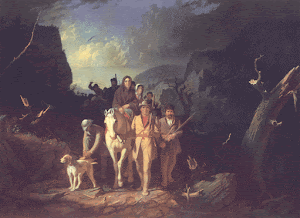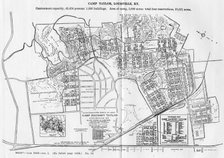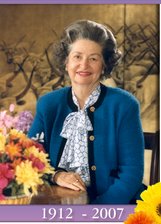757. Some numbers
First, my apologies for missing the Winter Solstice, Christmas, the final Full Moon of 2012, and, more recently, the New Year celebration. They've been covered in the past and there is little to add. Minus any bad gifts or bad dates for New Year's Eve, there are minimal changes in how these are celebrated. And, they happen with precision. The Solstice, the Full Moon, Christmas, and New Year. But that precision is determined in different ways. And that is sort of (the opposite of) what this entry is about.
Solstices and Full Moons don't happen at the exact same time every year or month. While solstices have only happened, to my knowledge, in June and December, like their counterparts, the equinoxes, which only happen in March and September, full moons come and go on a moving pattern about every 28 days, so they roam through the dates on a calendar. Christmas and New Year, however, are well-established on their dates of December 25 and January 1. If someone wishes to take me task on that latter date, that is ok. I am aware that the Romans cited March 1 as their New Year.
But this entry isn't even about that except for the part dealing with numbers. As my seven faithful readers may or may not know, I have a fascination with numbers, one which is manifested in many different ways. I like the way they interact, I like the way they add up, multiply, divide, and diminish. I even like their fractions, perfect numbers, prime numbers, denominators, and numerators. All of it. I've made something of a career out of it.
Thus, I've been pleased to have lived my life in the time frame I have as I've been witness to some interesting dates over time. In this essay, by dates I will not always mean things like March 23 or December 13 or June 30 or September 2, all of which do have my attention for one reason or another. I might mean their corresponding dates, such as 03/23 or 12/13 or 06/30 or 09/02. You get the idea.
During my lifetime we've lived through some interesting combinations of dates. The numbers assigned to make up our dates, we must accept, are arbitrary. We currently operate under what is known as the Gregorian Calendar. It was put in place by Pope Gregory in the days when a pope could do such things. It replaced the Julian calendar. It was adopted in the United Kingdom, and thus the British colonies, on September 2, 1752, which was then followed by September 14, 1752. Not everywhere adopted it at the same time. Russia didn't start using it until January 31, 1918. Alaska's calendar changed from the former Julian calendar, also named for a pope, between the British adoption and the Russian adoption, when its ownership changed hands in what is sometimes referred to as Seward's Folly, the purchase of Alaska by the United States. The treaty approving the purchase passed the Senate in April 1867 with a six month delay in taking effect. Thus, October 6, 1867 was followed by October 18, 1867, in America's Last Frontier. Some of you have heard the reference to Seward's Folly since high school history classes. If you have been to see the movie Lincoln, he, Seward, after Lincoln, played one of the largest roles in the handling of the Civil War, a most interesting character. But, I digress.
As stated, the calendar is ever-changing, even if in miniscule ways, such as leap-seconds. A leap second is added, usually unbeknownst to most of us, now and then so that our clocks are in accord with the passage of a day, which in lay terms is the amount of time between the passes of the sun directly overhead. The most recent leap-second was added at the end of the 23rd hour and the 59th minute of that hour and after the 59th second of that minute on June 30th just six months ago. Did you feel it? They are added either at that point on June 30 or at that same point on December 31, which is when one was added in both 2005 and 2008. The more common change of the calendar is the one we all do experience every four years in February when a leap-day is added. 2012 was one such year. But here is one of those extraordinary days that caught my attention, in a reverse sort of way. Back in 2000, you remember Y2K, we added, as might be expected, a leap-year day and called it February 29, 2000. But, there wasn't a leap-year day added in 1700, 1800, or 1900. Nor will there be one in 2100, 2200, or 2300. Every hundred years, according to the rules, we don't add one, unless the first two digits of that year is divisible by four, as was the 20 in 2000. And we were there.
I don't remember when dates and numbers first caught my attention. I do remember recognising at a very young age that my brother and I were each born on a prime number, he on the 17th, me on the 23rd. I remember noticing the birthday of a girl I dated in high school, Janice. Her birthday was January 9, or 1/9. And she was born in 1962. Her birthday could read 1/9/62, from 1962. A little thing, but it got my attention. The same would be true of anyone born on January 9th, at least in the 20th century. But because there is no 0th day of February, that little fascination went out of style almost fourteen years ago.
Some other oddities we've lived through are more palindromic years than usual, meaning two. Since the year 1000, palindromic years have been 110 years apart. For example, 1001, 1111, 1221, 1331, and so forth. But we who have lived in the last 22 years have made it through two in that 110 year window, 1991 and 2002. The next one will be 2112, then 2222, and so on. I remember working this out in my head in 1991, an exceptionally bad year for me and I was looking for reasons as to why that was the case. We also have had the fortune of living through all the repetitive dates and even times. Just three weeks ago was the much flaunted 12/12/12. There were also 11/11/11 and 10/10/10. But we cannot count the others because of that 0 ahead of the final digit. I have two friends, Bobby and Morgan, who were born on 8/8 and 10/10 respectively. My former boss and friend, E. Porter Hatcher, Jr., who passed away three days ago, was born on 9/9. My step-nephew, Jimmy Jones, was born on 5/5. He was born in the palindromic year 1991, giving him a double fun-fact. I've often tried to co-relate my parents' birth dates of 11/1 and 1/22. Surely there is something there, you'd think.
Two more thoughts. First, years with consecutive numbers. Admittedly, none of us have lived in a consecutive in-a-row year, what the Lottery would call a straight-box. The last one was 1234 and the next one is 2345. But we have lived in two which were made up of consecutive numbers. These were 1980 and, now, 2013. The next will be in 2019 and hopefully many of us will see it. The next after that is 2091, presumed to be out-of-reach.
Finally, to my readers and friends under the age of 25, this is an historic year for you. It is the first year of your life that one of the digits isn't a repeater. Every year from 1988 to 2012 has been made up of only three different numbers amongst the four digits, and in two cases, only two different figures - 1999 and 2000. 2013 is the first year since 1987 that the four numbers are all different.
So, it really is a new year, at least as far as numbers go.
Happy New Year. Celebrate!



























No comments:
Post a Comment